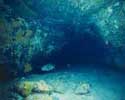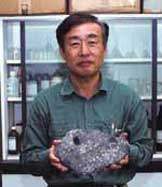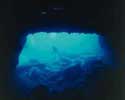|
A Japanese map of the island of Yonaguni-Jima showing
the locations of nearby anomalous underwater discoveries
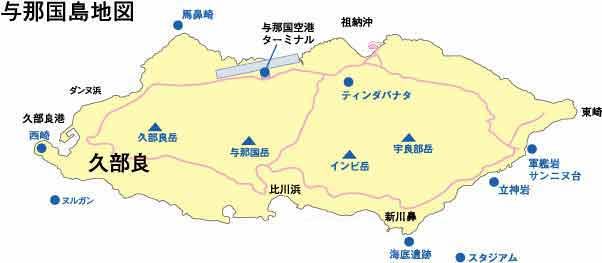
–
Okinawa, Japan
–
This diagram of the ‘No. 1 monument’ at Iseki Point shows the locations on the structure of the many anomalous features referred to by Professor Kimura in the interview. As can also be seen, the arrow in the bottom right corner points in the direction of ‘The Stadium’ some 550 yards to the south-east, while both the separate ‘Gosintai’ and ‘Naka-gusuku’ structures are located very much closer to the main structure that is known locally as the ‘No. 1 monument’.
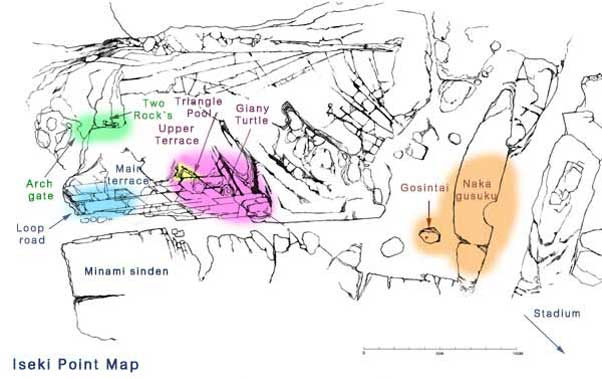
–
Okinawa, Japan
–
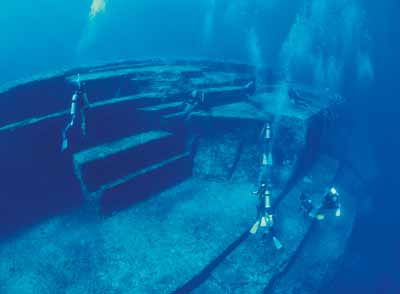
divers exploring the ‘upper terrace’ area for toolmarks
–
Okinawa, Japan
–
The image to the left below gives a good indication of the state of the structure regarding ‘rubble’, and as can be seen, this part of the ‘loop road’ is almost totally clear of the sort of rubble that usually piles up at the bottom of cliffs due to ‘natural erosive forces’. Not only are there many rubble-free areas at Iseki Point suggesting that it was artificially made and maintained, but there is also evidence of a ‘dressed-stone wall’. A cross-section of it can be seen in Professor Kimura’s diagram below this image of the top terrace.
Notice from both the image and the diagram that at certain places the sides of the No. 1 monument’ are perfectly straight, and Professor Kimura discovered that on both the vertical and the horizontal surfaces there are a number of ‘marks’ indicating that they have been struck by a hard object.
importantly, the ‘marks’ are not found along the rock grain
|

—
Okinawa, Japan
—
|
|
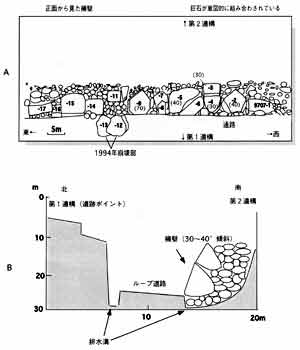
—
Okinawa, Japan
—
|
History’s Mysteries
“Do undersea relics near Okinawa offer proof of a sophisticated civilization during the last ice age?
Archeologists have long believed that civilization as they define it — intelligent, tool-making, monument building, social humans — began about 5,000 years ago.
But submerged beneath the waves near the Japanese island of Yonaguni is evidence that may well overturn that long-held theory.
A small but persuasive number of scholars and scientists have long thought that “advanced” societies may have existed as long as 10,000 years ago.
Their theories, however well reasoned and defended, have been hamstrung by a lack of evidence..
But recent discoveries of man-made artifacts on the Pacific seafloor may well prove to be the smoking gun that will propel this alternative view of civilization to prominence”.
see the evidence with ‘unique underwater footage’
of the various Yonaguni structures in the
‘History Channel’ TV programme
“Japan’s Mysterious Pyramids”
DVD
or
VHS
|
|
Books About
Prehistoric Japan
“Ancient Jomon of Japan”
by
 Junko Habu Junko Habu

Get This Book From:
Amazon.com
Amazon.co.uk
“Prehistoric Japan:
New Perspectives on Insular East Asia”
by
 Keiji Imamura Keiji Imamura

Get This Book From:
Amazon.com
Amazon.co.uk
“In the Wake of Jomon: Stone Age Mariners and a Voyage Across
the Pacific”
by
 Jon Turk Jon Turk
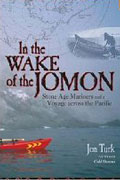
Get This Book From:
Amazon.com
Amazon.co.uk
“An Archaeological History of Japan, 30,000 B.P. to A.D. 700”
by
 Koji Mizoguchi Koji Mizoguchi

Get This Book From:
Amazon.com
Amazon.co.uk
“Sacred Texts and Buried Treasure:
Issues on the Historical Archaeology of Ancient Japan”
by
 William Wayne Farris William Wayne Farris

Get This Book From:
Amazon.com
Amazon.co.uk
“Shinto:
The Sacred Art of Ancient Japan”
by
 Victor Harris Victor Harris
(Editor)
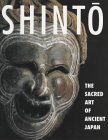
Get This Book From:
Amazon.com
Amazon.co.uk
if you would like to support
The Morien Institute
marine archaeology research
please send us a book

from our Wish List
|

